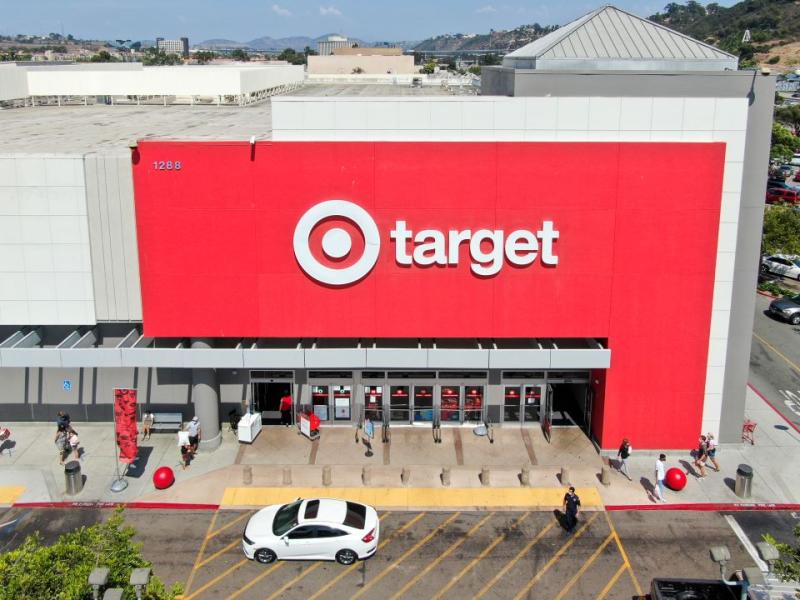How Walmart and Target Approach 2023 Investments: From Omnichannel Upgrades to Supply Chain Automation and Transportation Optimization
Two of the largest retailer/supercenter chains in the industry have recently shared details about their planned enterprise upgrades. While Walmart is focusing more on overall omnichannel experiences, Target has zoned in on supply chain transformation.
Learn about their respective strategies as detailed in their recently released earnings reports.
Walmart
Walmart has its sights set on end-to-end omnichannel transformation. During the company’s latest call with investors, John David Rainey, EVP and CFO, stated Walmart is not only expanding its brick-and-mortar presence, but is also applying digital upgrades to its online experiences.
According to Rainey, Walmart opened 120 stores over the past 12 months and has plans to update 300 stores this year to replicate its new remodeled supercenters that feature more brand shops, digital displays, wider aisles, updated fixtures, and more.
Regarding e-commerce, Walmart has expanded its assortment to include over 200 million SKUs in apparel and nearly 60 million in home categories. The company also plans to grow its digital fulfillment capabilities on a global scale, already rolling out 60-minute delivery to 80% of its Supercenter and Express stores in Mexico.
“It's clear our omni model is resonating with customers across income demographics who are seeking out Walmart digitally and in stores, curbside, and via delivery,” said David Rainey.
To support these initiatives, Walmart has been heavily investing in its distribution and fulfillment capabilities, leveraging automation to increase efficiency and reduce costs. David Rainey expects these investments to “drive a significant improvement in unit economics in the coming years.”
Within its global efforts, Judith McKenna, president and CEO of Walmart International, said there’s already been some really strong progress to implement a tech-enabled ecosystem and marketplace.
This has a lot to do with applying U.S. learnings, “particularly from a marketplace perspective where we're building out a global marketplace capability,” she said. “We've just launched Walmart fulfillment services in a number of our markets.”
“In closing, the year is off to a good start,” emphasized David Rainey. “We're positioning our business to succeed with an expanding omni-ecosystem that allows us to grow our top and bottom line throughout any economic environment.”
Target
Target’s primary area of focus has been in its supply chain. John Mulligan, EVP and chief operating officer, has shared more details on a multi-year journey Target is undergoing to modernize how it replenishes inventory.
“When I moved into this position eight years ago, store inventory replenishment was a standardized inflexible process that placed a heavy burden on our store team members,” said Mulligan in a recent call with investors. “With this modernization effort, our primary goal is to reduce those labor demands on our stores. We achieved that result by moving work upstream to a distribution center where we can apply the appropriate processes, technology, tools, and automation to accomplish the work at scale.”
New distribution centers for Target include increased tech sortation and loading capabilities, reducing the time previously spent on manual efforts and facilitating shipping processes for smaller quantity break-bulk items.
Mulligan also shared that the company is looking to transform its legacy distribution centers to reduce costs related to replenishment and improve accuracy by implementing increased automation. Much of this has followed a test-and-learn approach.
“But I want to stress, automation is only one way to deliver value to our business,” he said. “Consider our sortation centers which are positioned downstream from our stores to provide speed and efficiency in support of last-mile delivery. Our sort centers are not highly automated. Instead, they use technology and sophisticated process logic to sort packages and provide a faster and better guest experience at a significantly lower cost.”
Target has scaled these centers quickly, totaling nine today (an increase from three just a year ago) and expecting 15 or more by 2026. Additionally, the company has implemented other upgrades across its supply chain, such as opening an extended sortation facility in Georgia to expand the reach of its next-day delivery service.
Other areas impacted include transportation, where Target has shifted routes to larger passenger vehicles to accommodate for an increased amount of packages per route.
“With these changes, in the first quarter, approximately 65% of our last-mile delivery serviced by Shipt were made with larger vehicles compared with zero a year ago,” said Mulligan.
Within fulfillment, Target is also developing a standardized, expedited way to load its vans, enabling packaged containerization and easy package identification upon delivery.







